
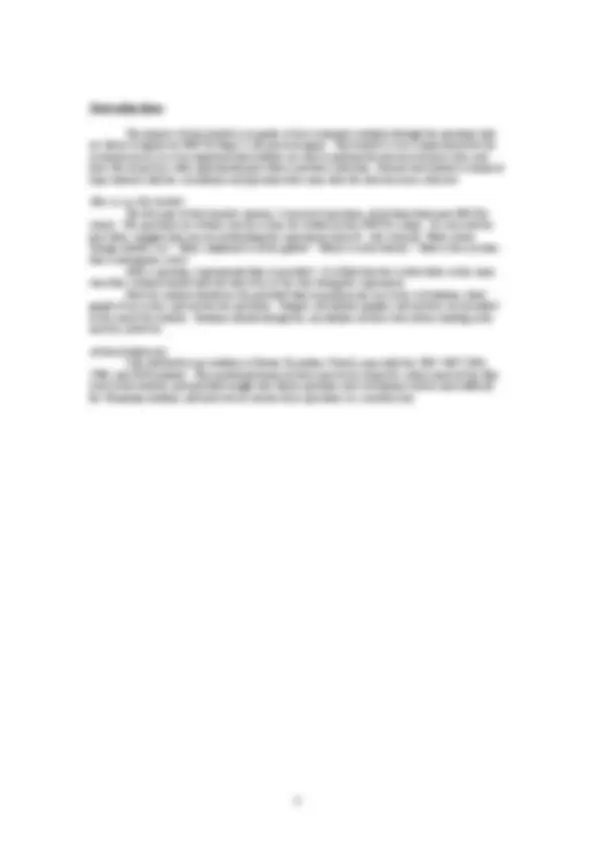
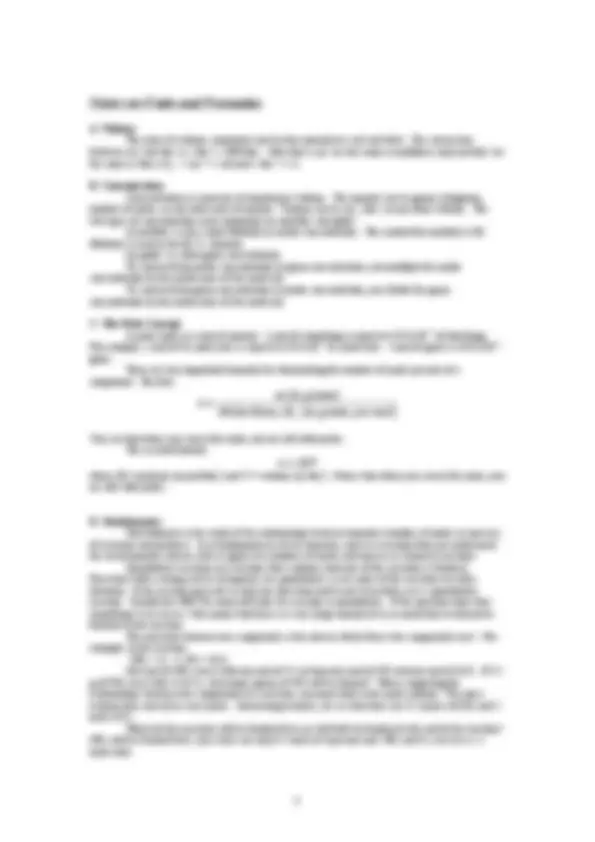
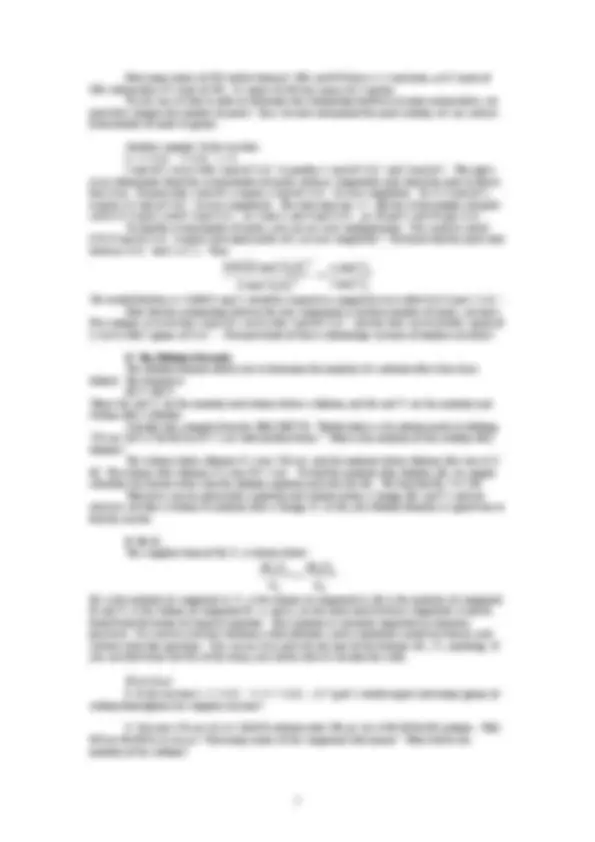
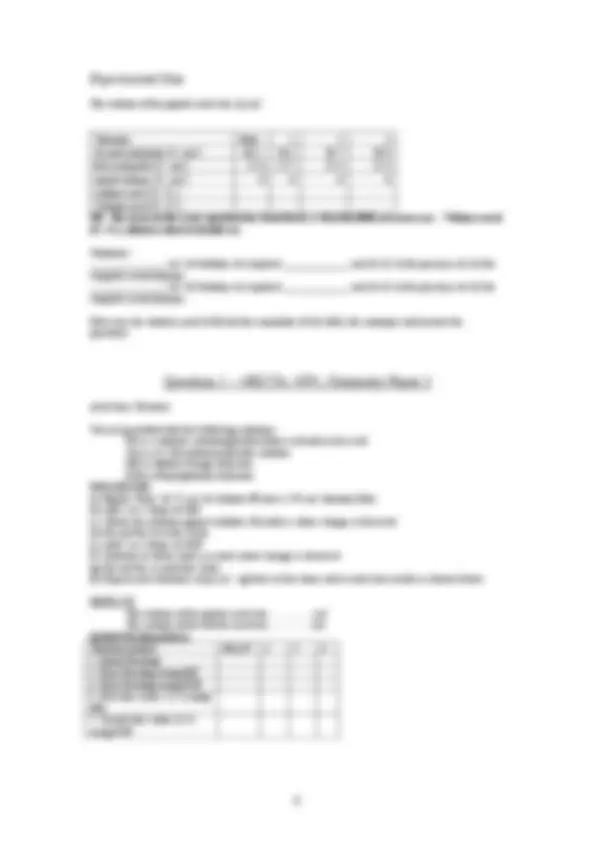
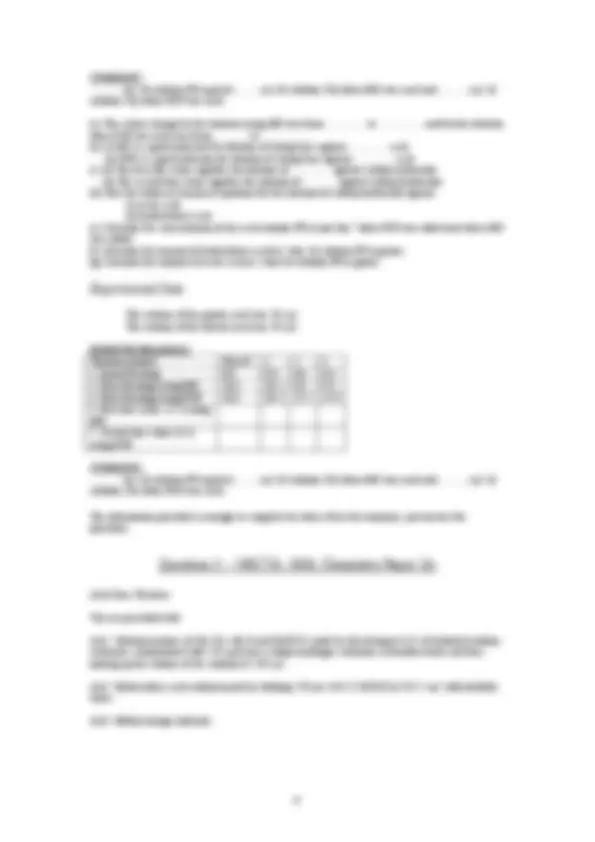
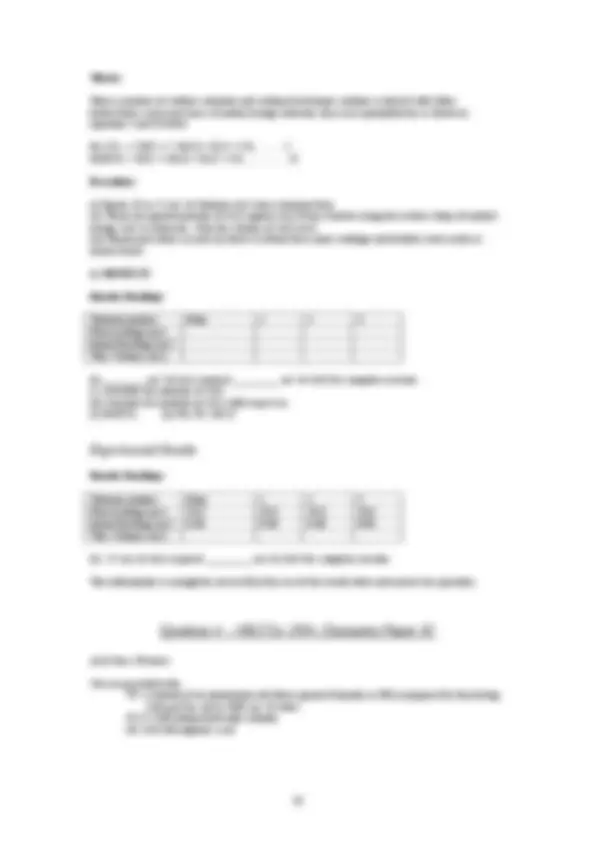
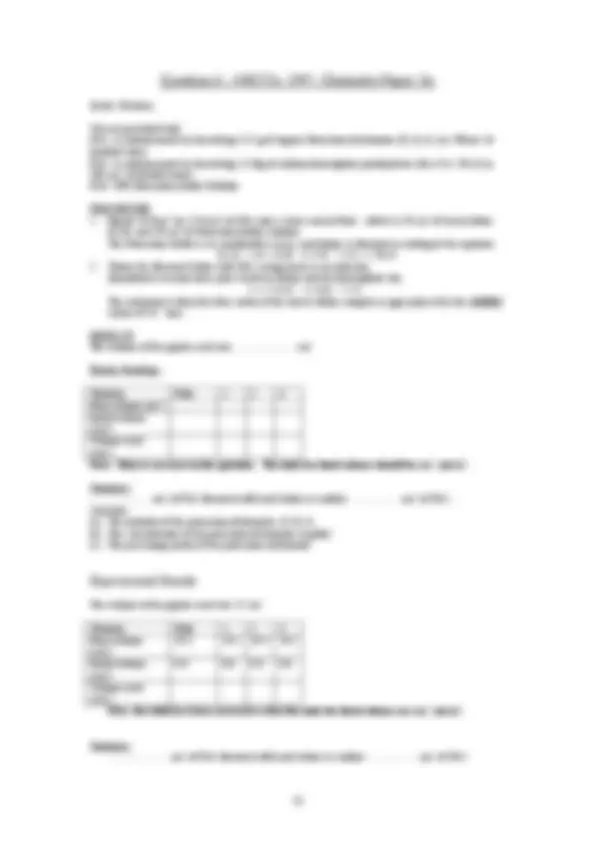
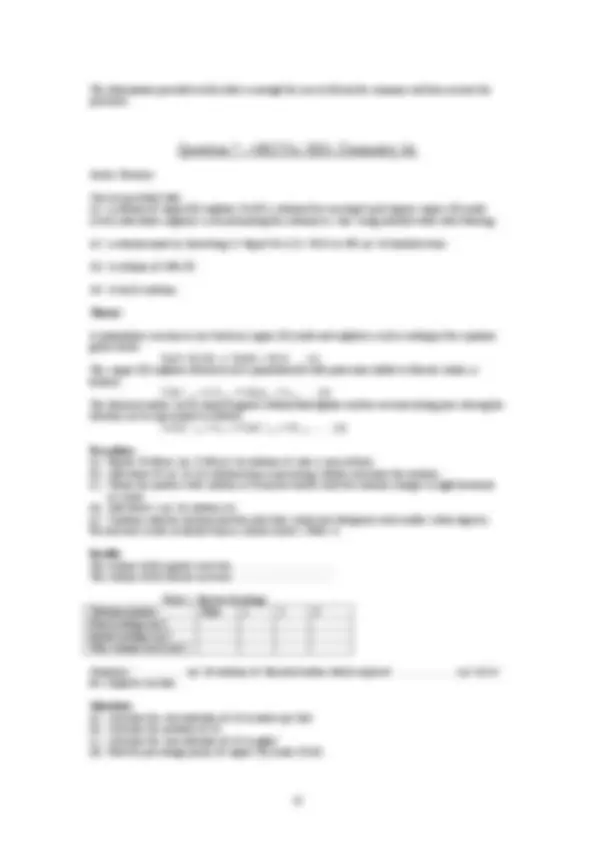
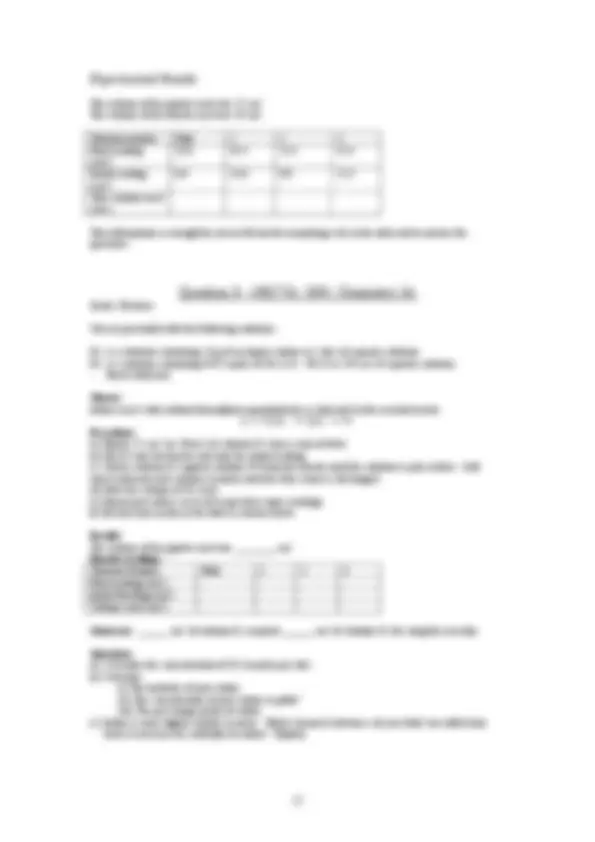
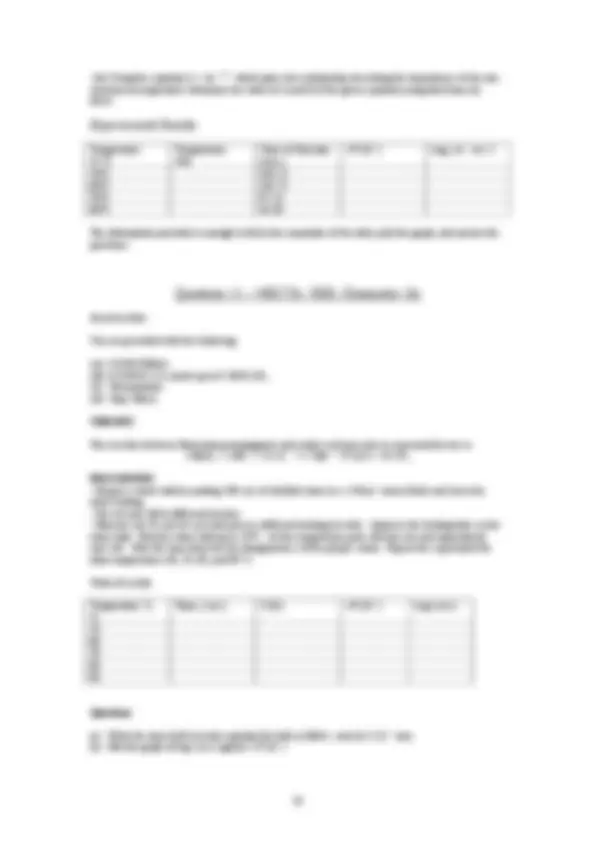
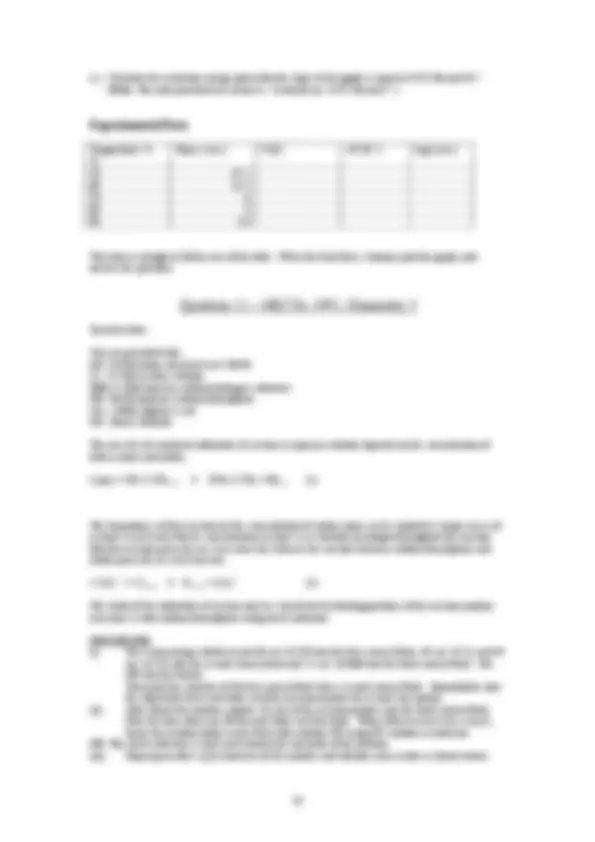
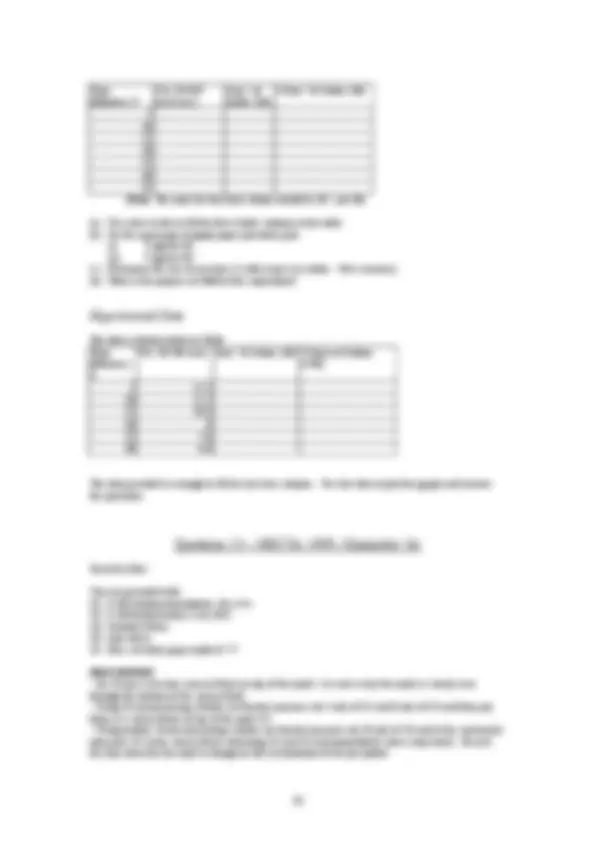
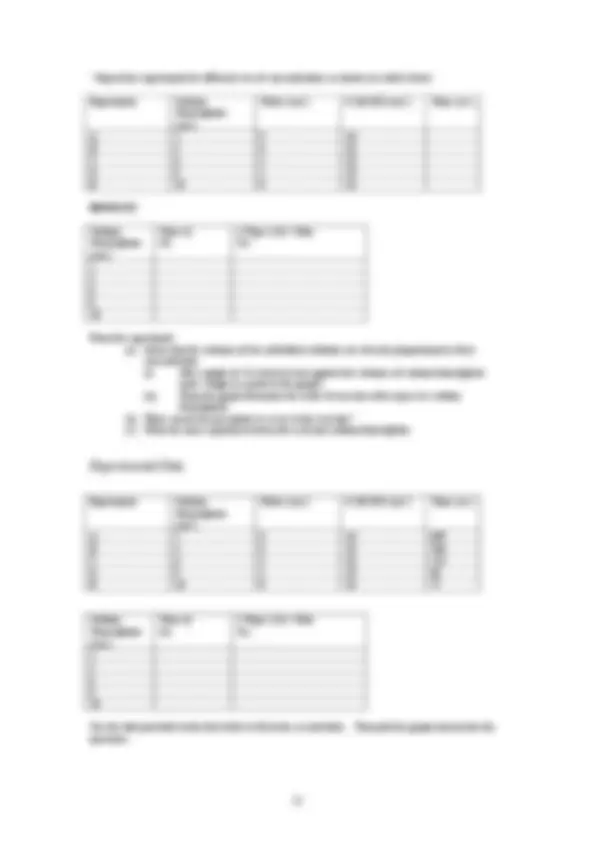
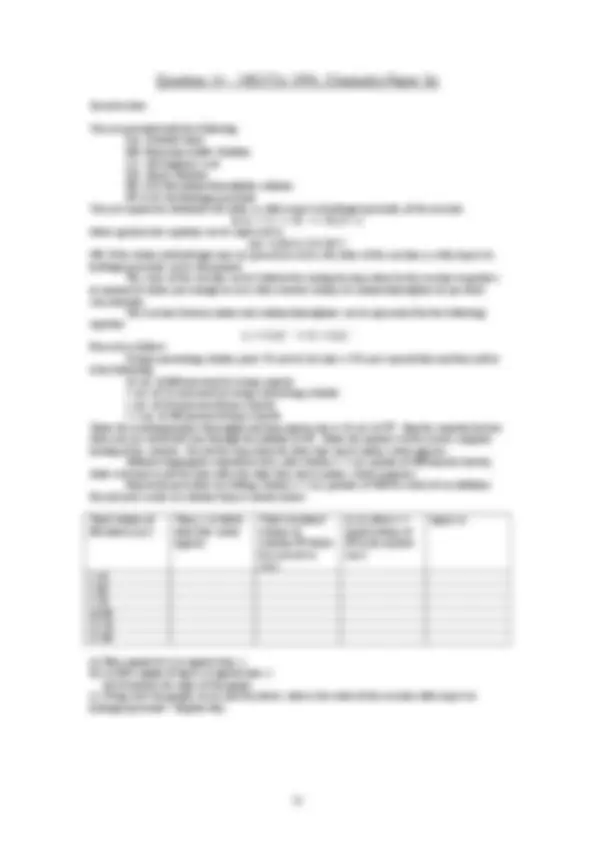
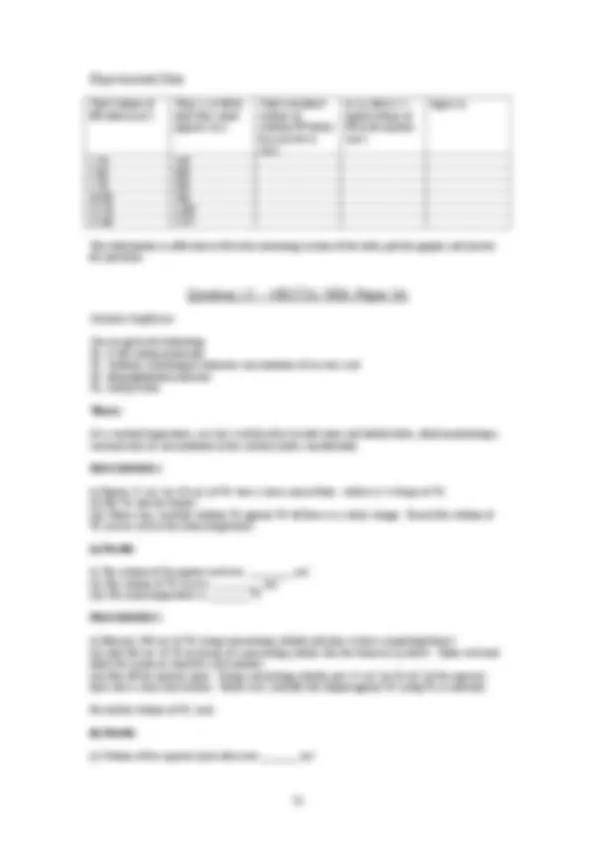
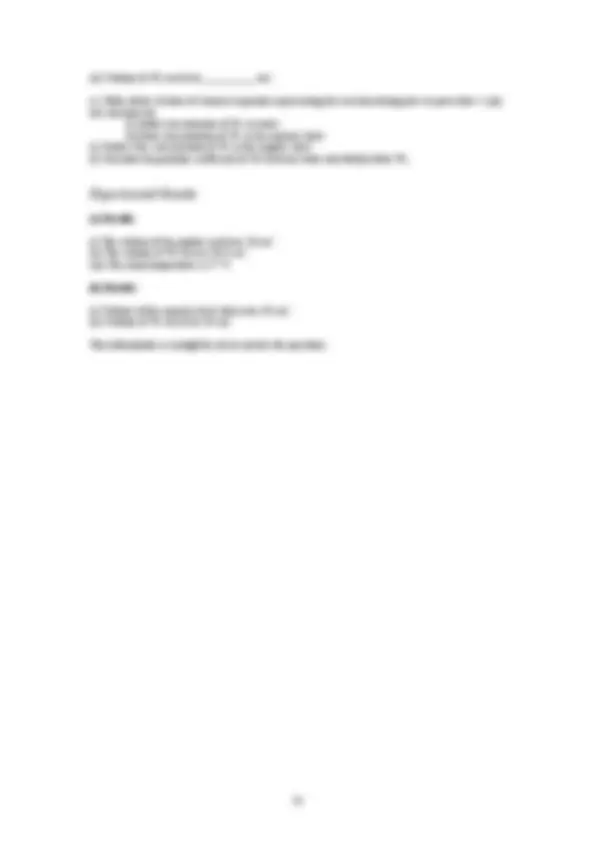
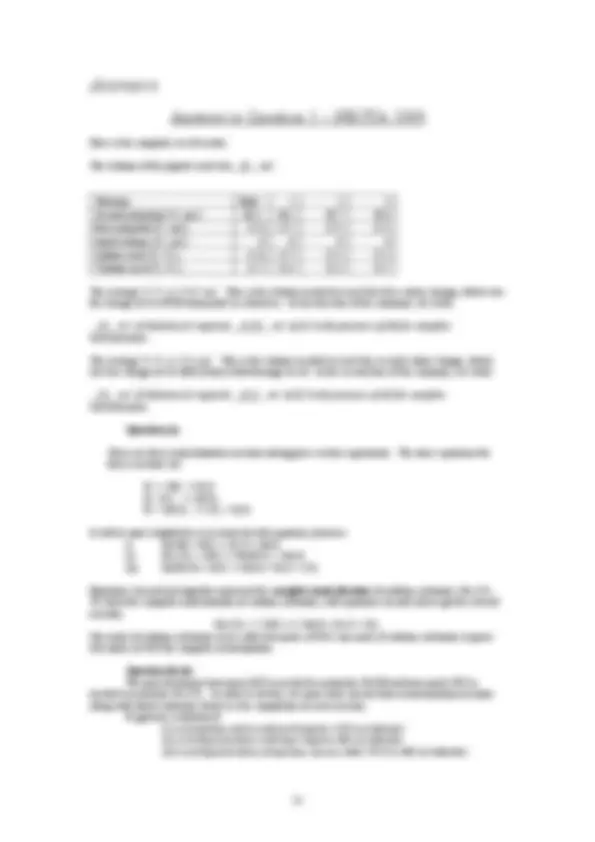
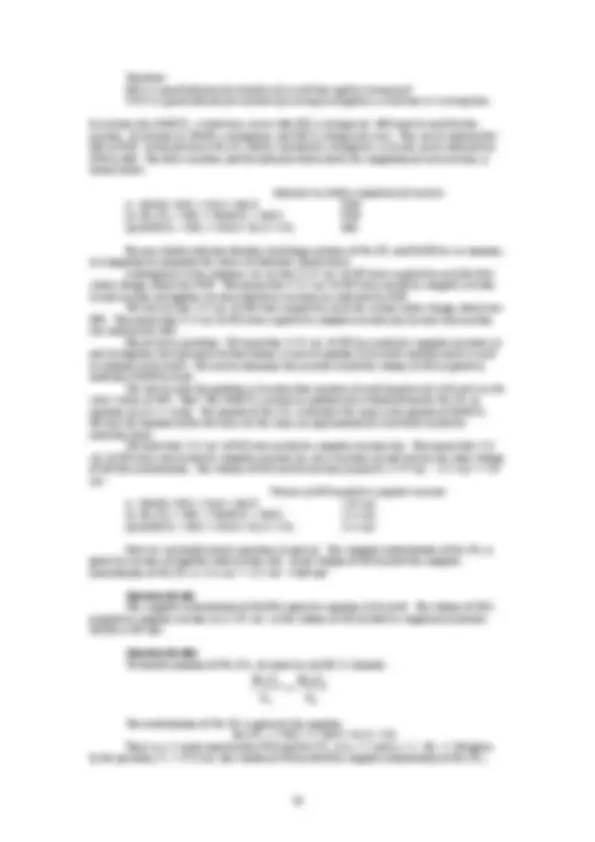
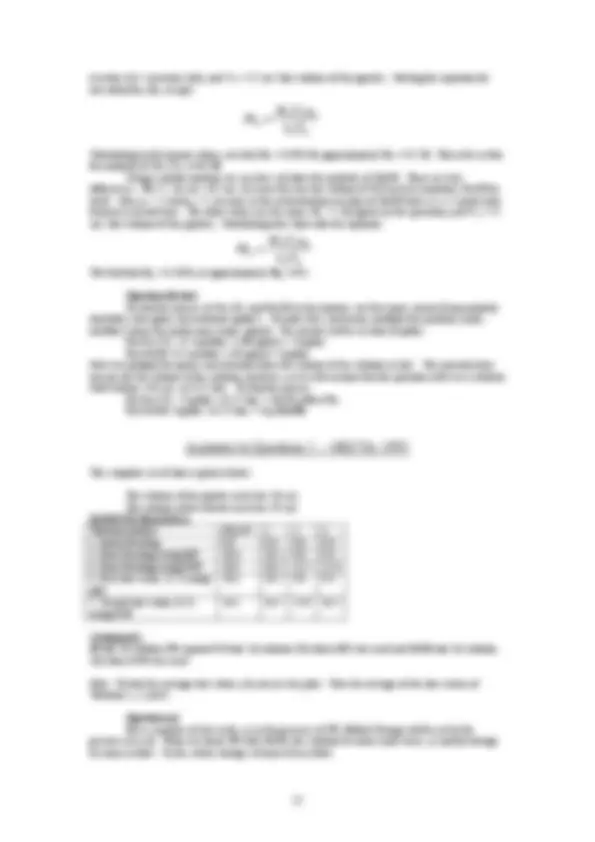
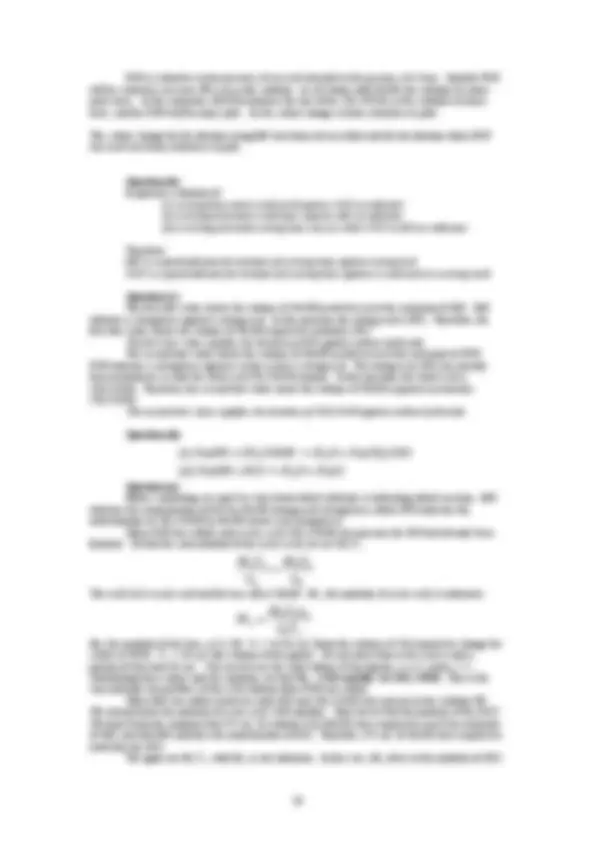
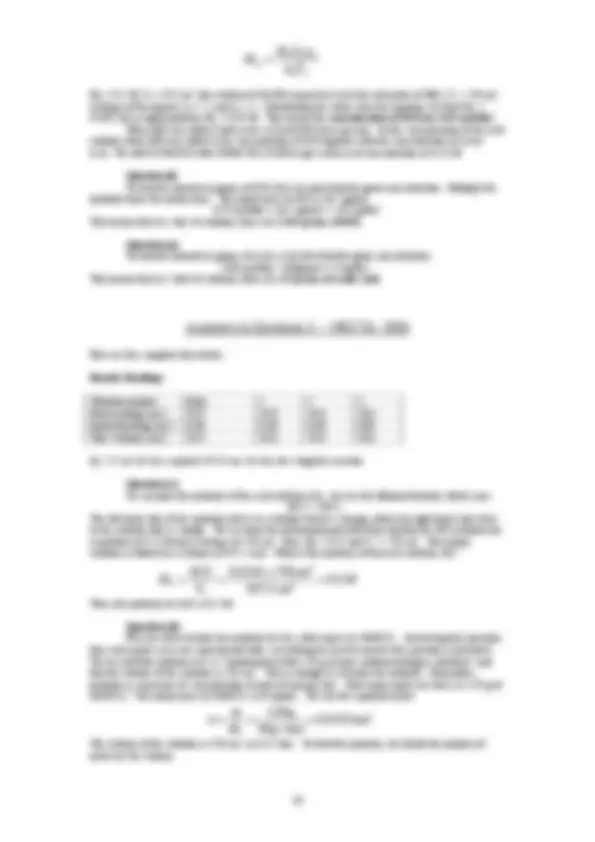
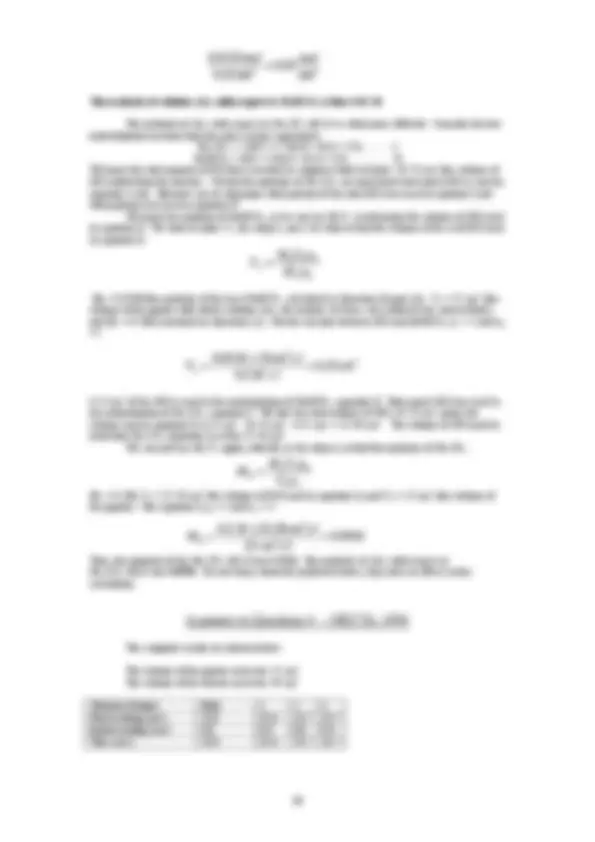
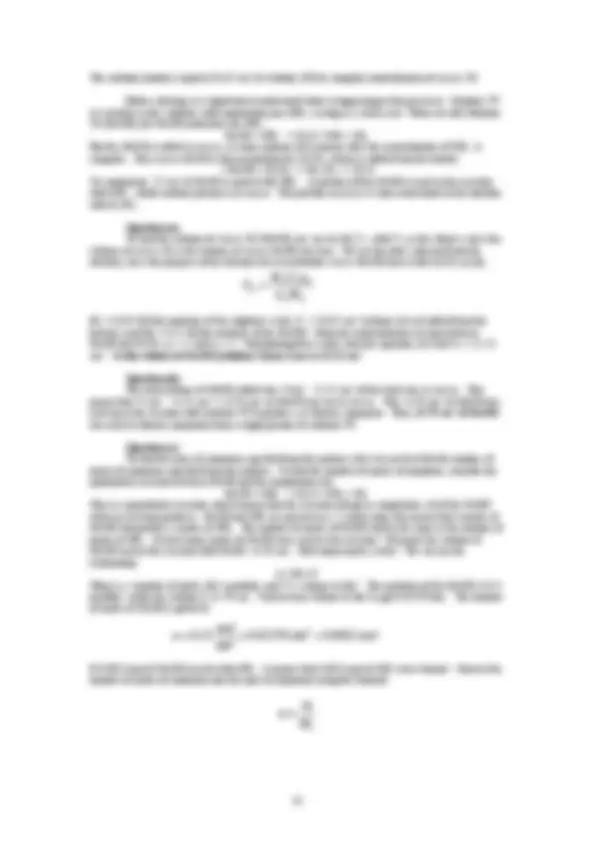
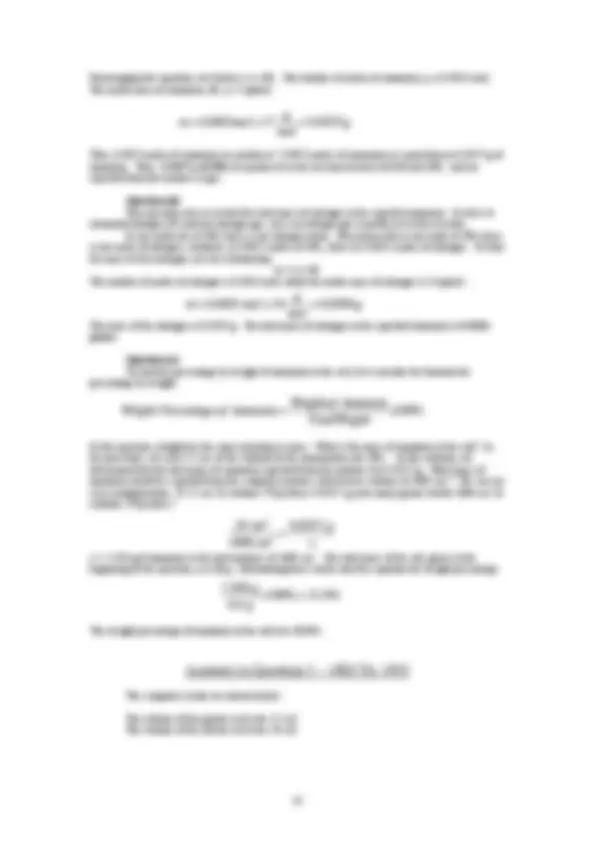
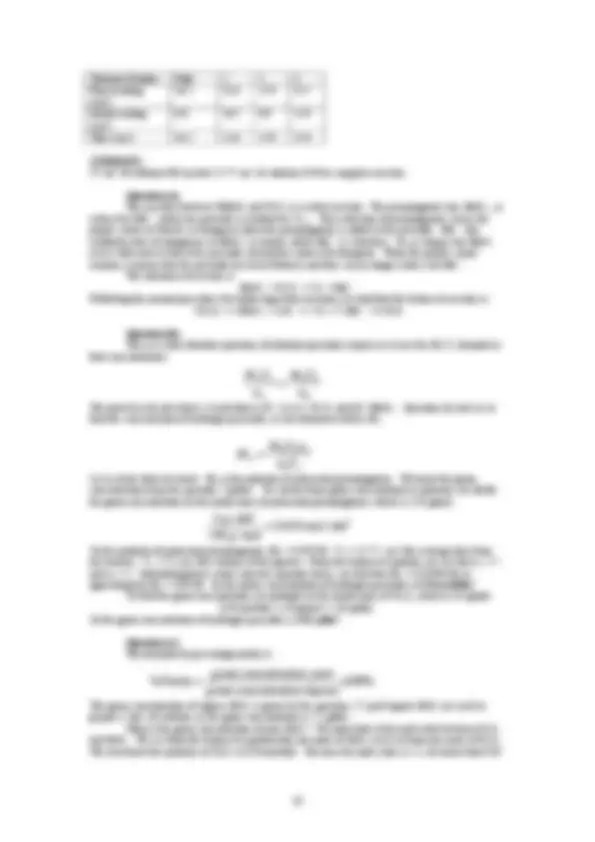
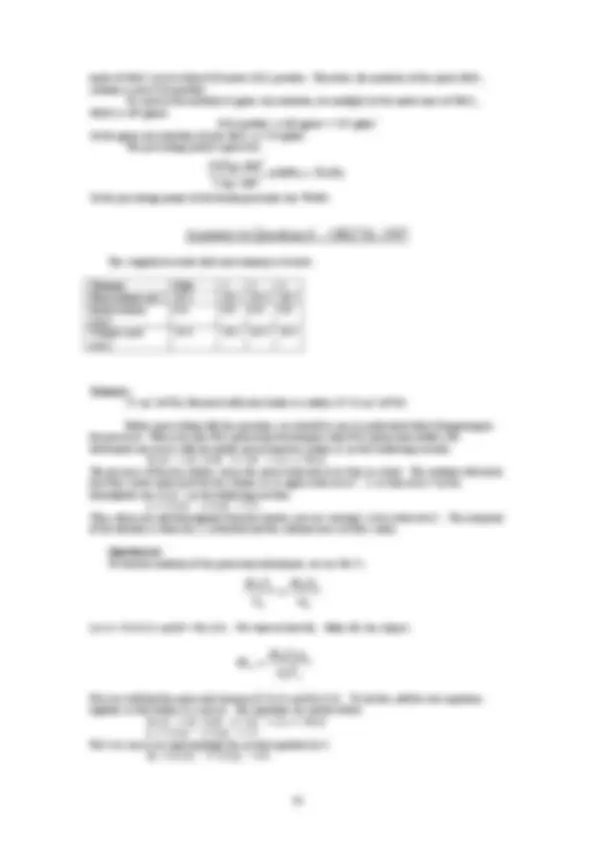
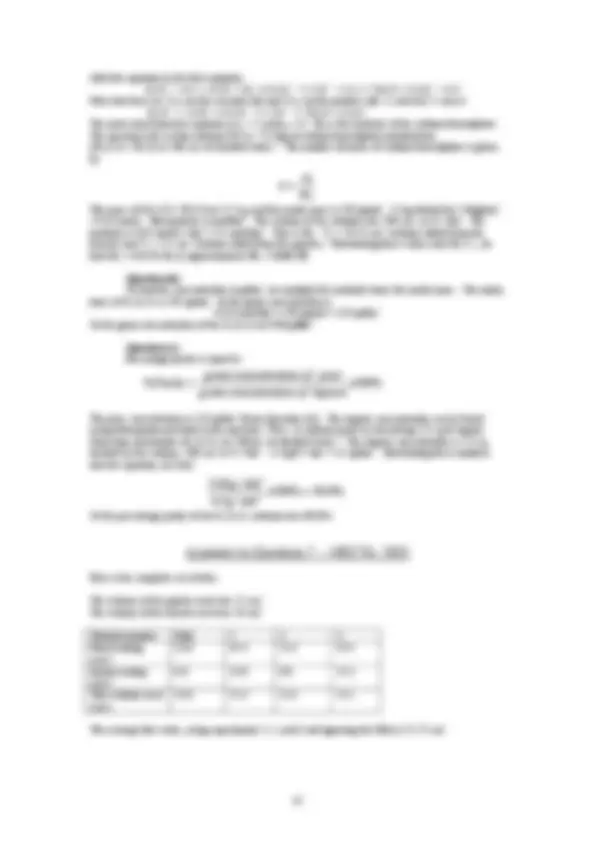
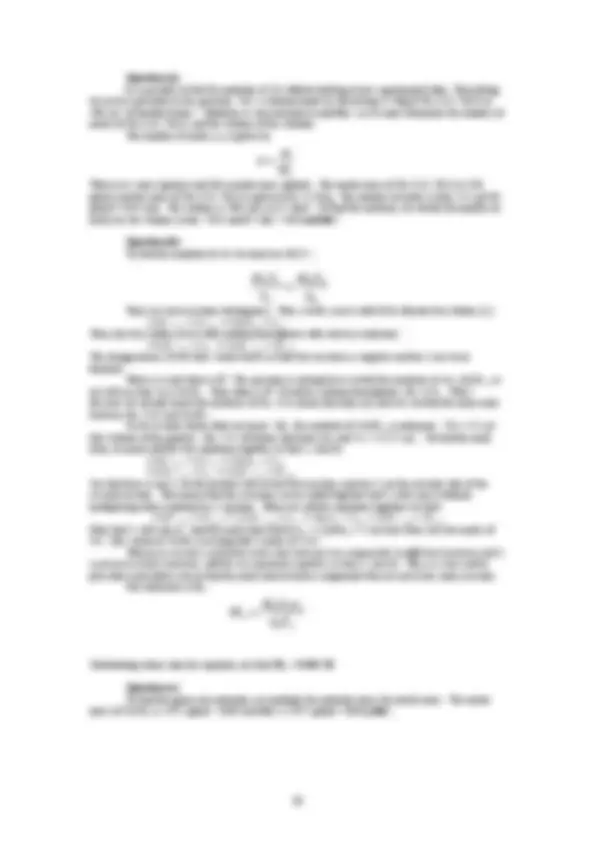
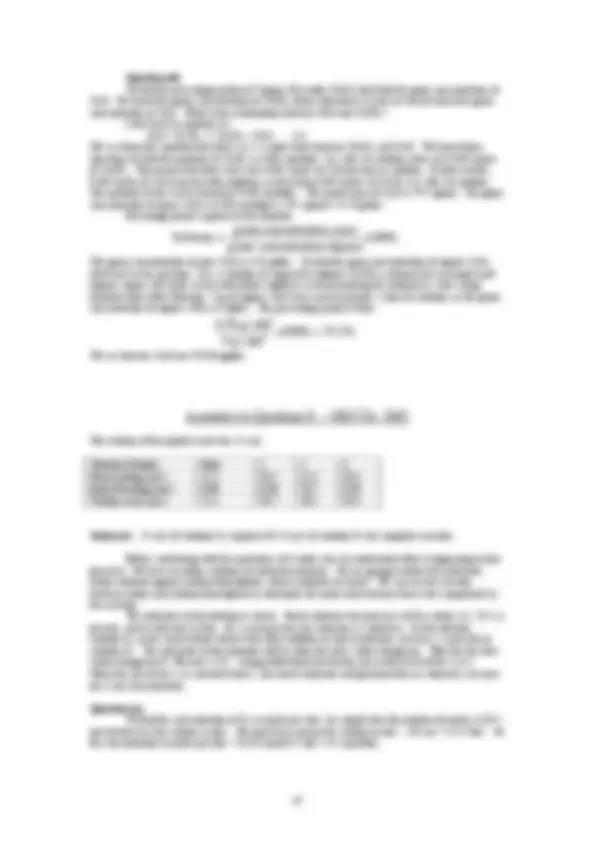
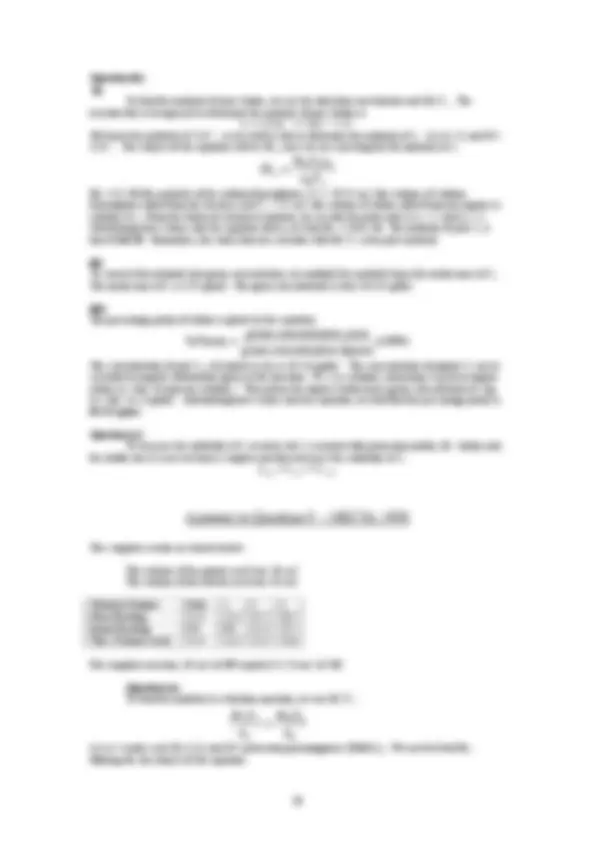
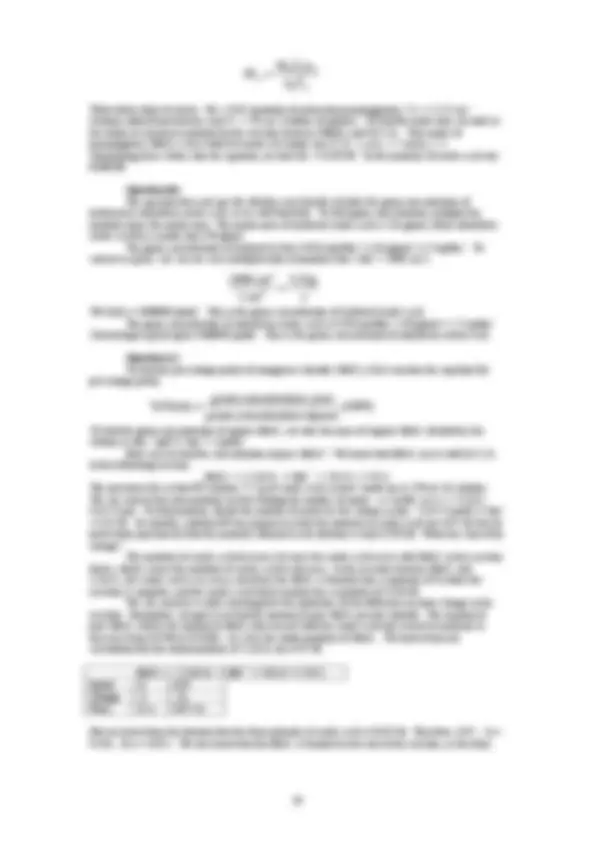
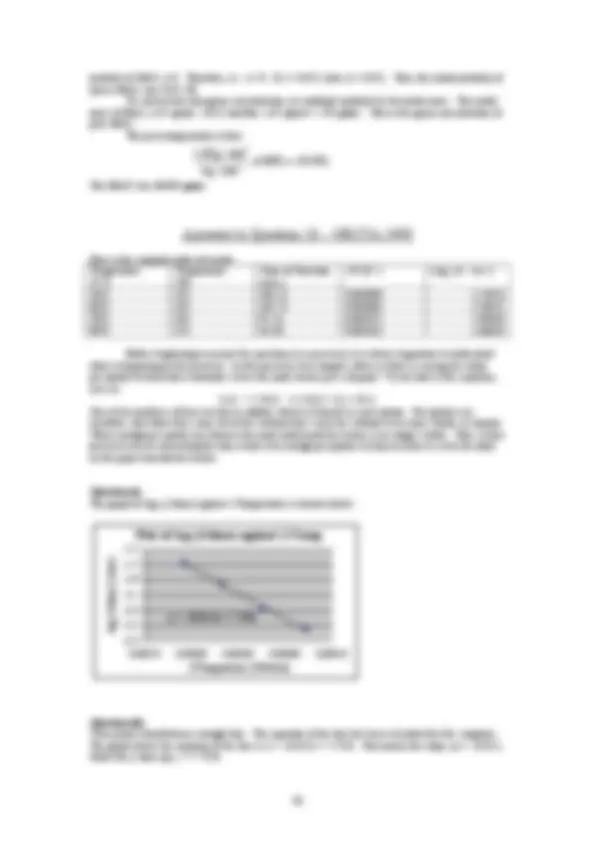
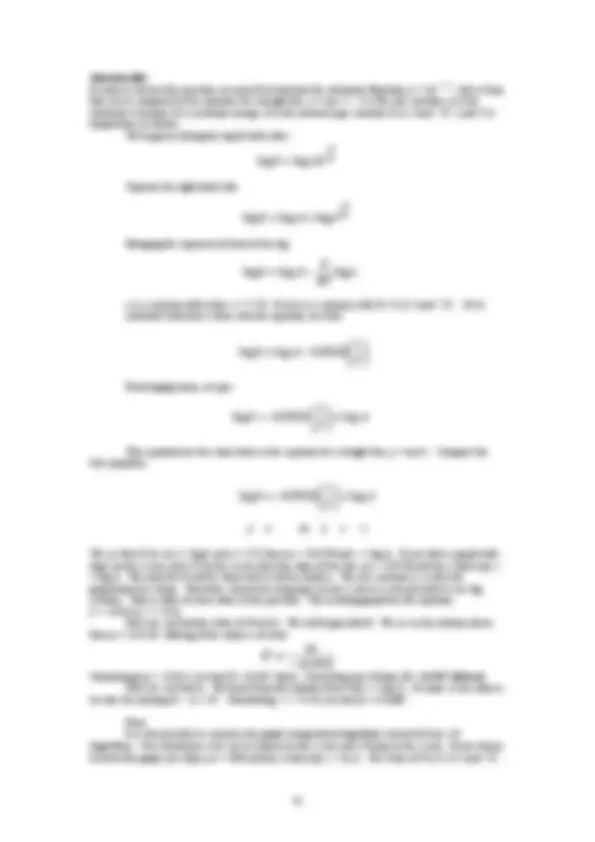
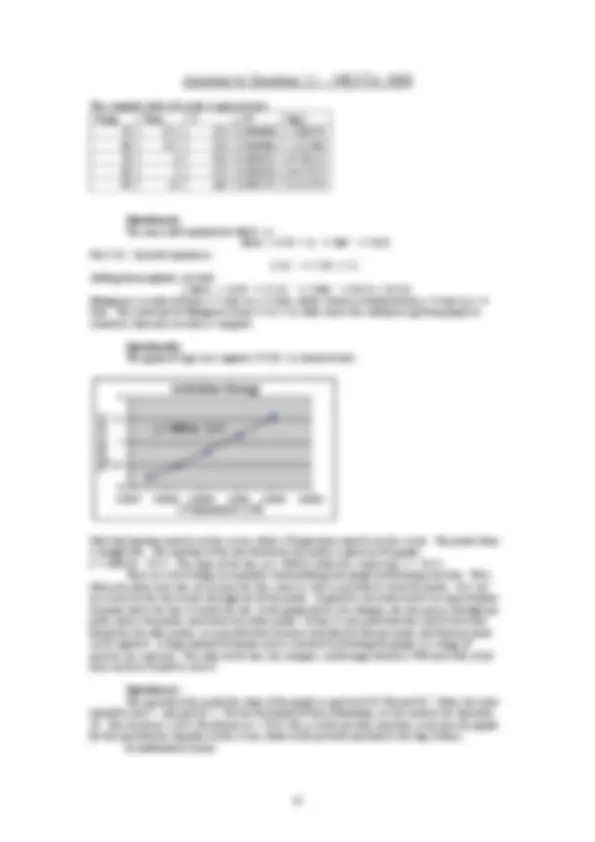
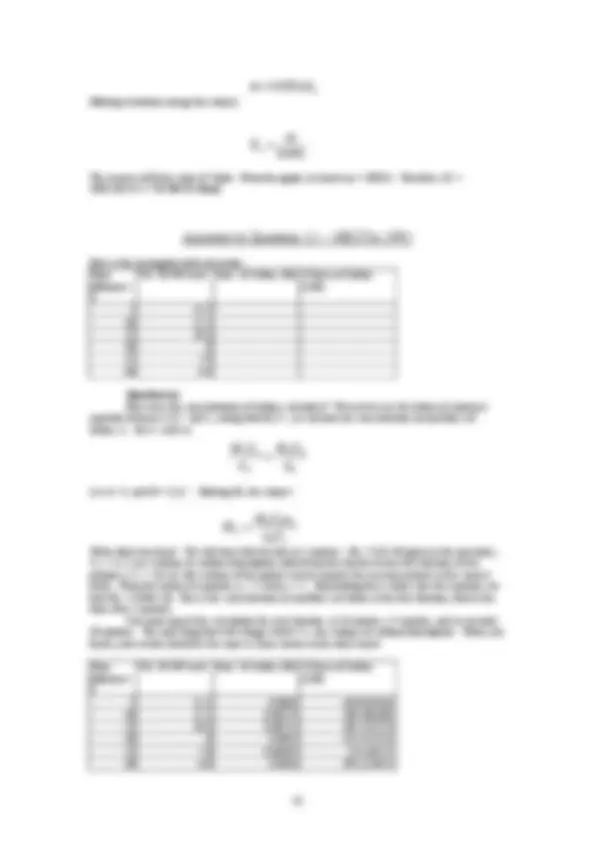
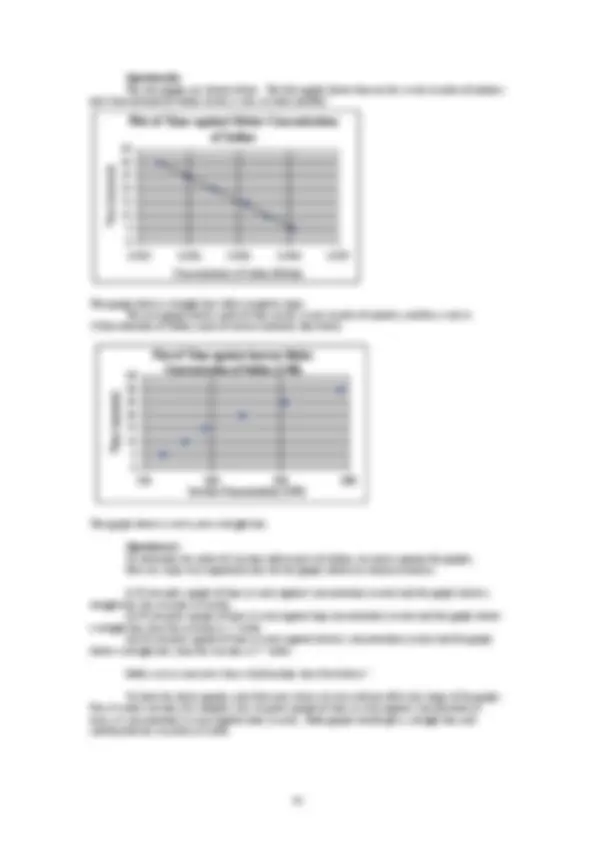
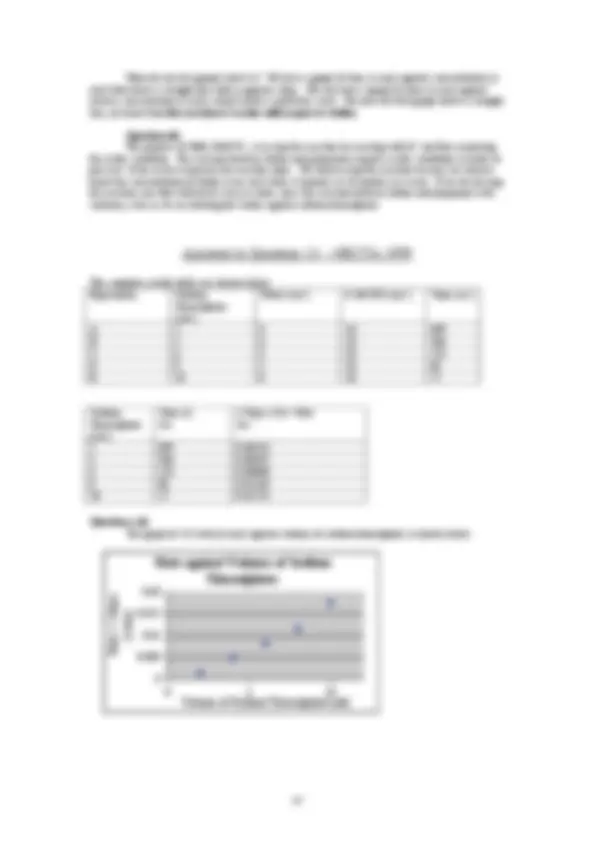
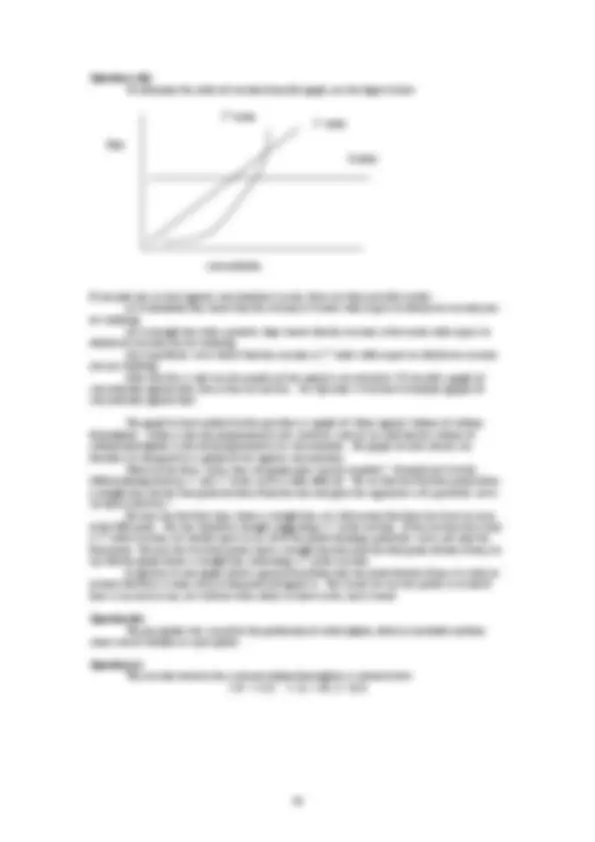
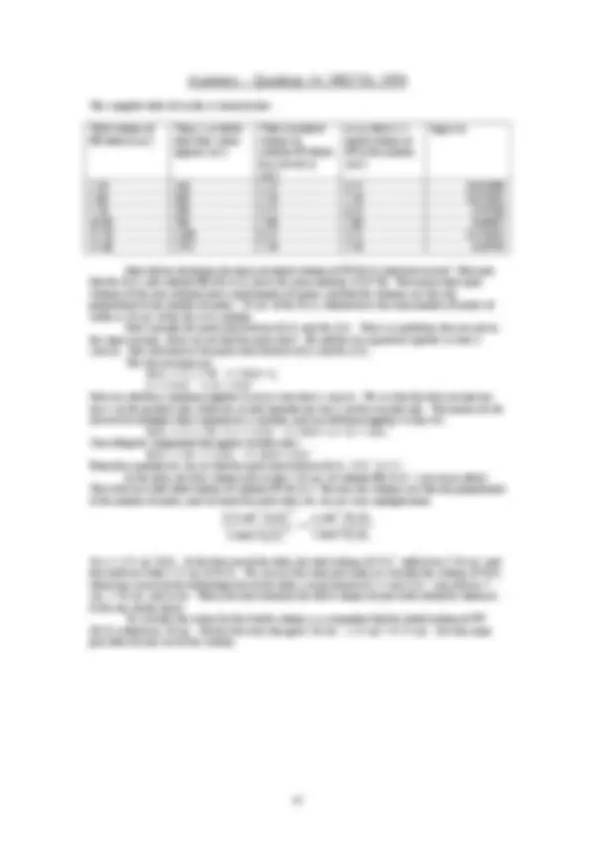
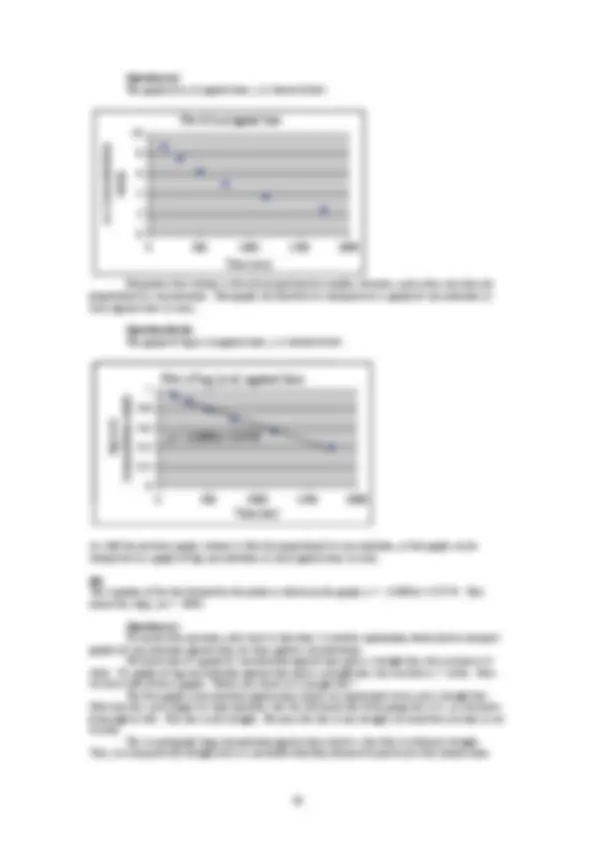
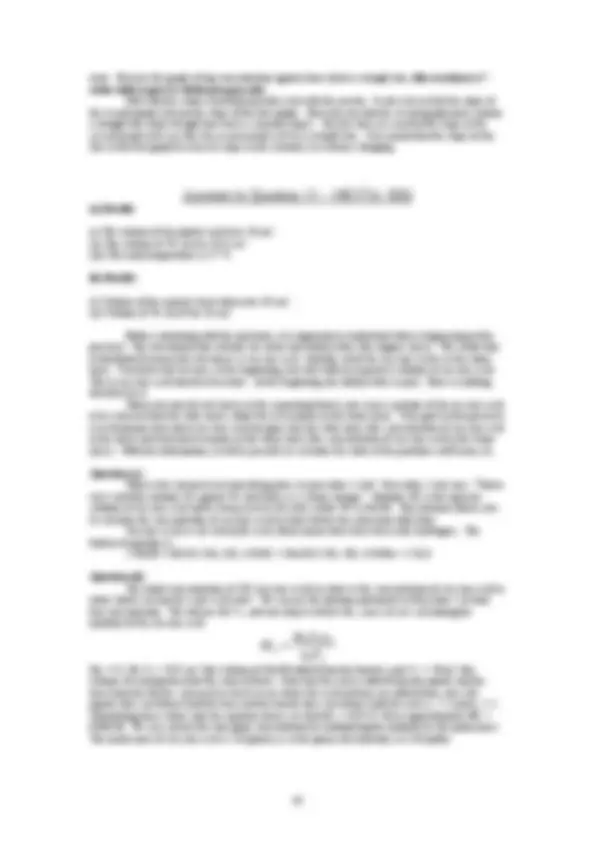
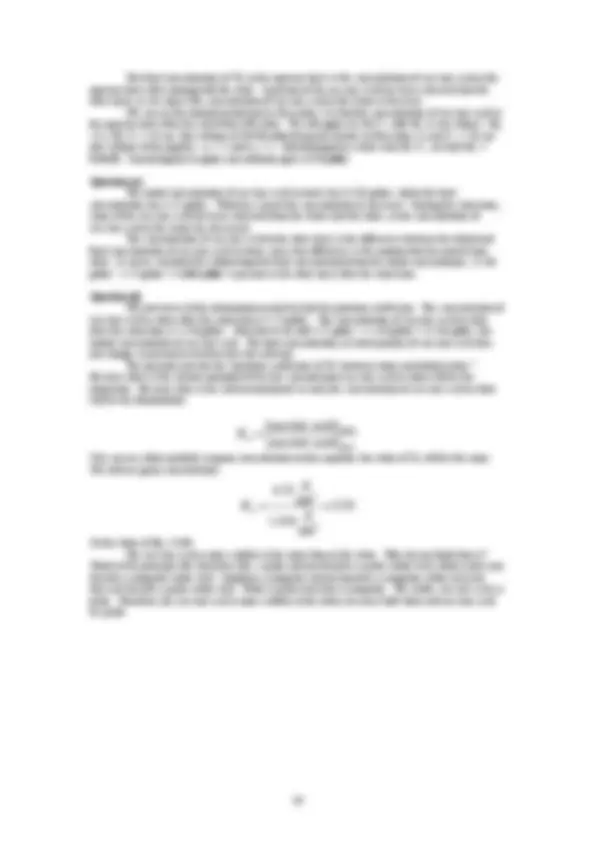


Study with the several resources on Docsity

Earn points by helping other students or get them with a premium plan


Prepare for your exams
Study with the several resources on Docsity

Earn points to download
Earn points by helping other students or get them with a premium plan
Community
Ask the community for help and clear up your study doubts
Discover the best universities in your country according to Docsity users
Free resources
Download our free guides on studying techniques, anxiety management strategies, and thesis advice from Docsity tutors
The purpose of this booklet is to guide A-level chemistry students through the questions that are likely to appear on NECTA Paper 3, the practical paper.
Typology: Summaries
1 / 50

This page cannot be seen from the preview
Don't miss anything!











































Questions
Notes on Units and Formulas A. Volume The units of volume commonly used in this manual are cm3 and dm3. The conversion between cm^3 and dm^3 is 1 dm^3 = 1000 dm^3. Note that a cm^3 are the same as millilitres (ml) and dm^3 are the same as litres (L). 1 cm^3 = 1 ml and 1 dm^3 = 1 L. B. Concentration Concentration is a measure of amount per volume. The amount can be grams, kilograms, number of moles, or any other unit of amount. Volume can be cm^3 , dm^3 , or any other volume. The two types of concentration used commonly are mol/dm^3 and g/dm^3. (i) mol/dm^3 is also called Molarity or molar concentration. The symbol for molarity is M. Molarity is used in the MAVA formula. (ii) g/dm^3 is called gram concentration. To convert from molar concentration to gram concentration, you multiply the molar concentration by the molar mass of the molecule. To convert from gram concentration to molar concentration, you divide the gram concentration by the molar mass of the molecule. C. The Mole Concept A mole (mol) is a unit of amount. 1 mol of something is equal to 6.022x10^23 of that thing. For example, 1 mol of H 2 molecules is equal to 6.022x10^23 H 2 molecules. 1 mol of goats is 6.022x10^23 goats. There are two important formulas for determining the number of moles present of a compound. The first: You see that when you cancel the units, you are left with moles. The second formula: where M = molarity (in mol/dm^3 ) and V = volume (in dm^3 ). Notice that when you cancel the units, you are left with moles. D. Stoichiometry Stoichiometry is the study of the relationships between amounts (number of moles or masses) of reactants and products. It is fundamental to all of chemistry, and it is essential that you understand the stroichiometry and are able to apply it to numbers of moles and masses in chemical reactions. Quantitative reactions are reactions that continue until one of the reactants is finished. Reactions with a strong acid or strong base are quantitative, as are most of the reactions in redox titrations. If the reaction proceeds in only one direction (and is not reversible), it is a quantitative reaction. Usually the NECTA exam will state if a reaction is quantitative. If the question states that something "is in excess," this means that there is a very large amount of it, so much that it will not be finished in the reaction. The mol ratio between two compounds is the ratio in which those two compounds react. For example, in the reaction: NH 3 + O 2 NO + H 2 O One mol of NH 3 reacts with one mol of O 2 to form one mol of NO and one mol of H 2 O. If 8. g of NH 3 react with 32 of O 2 , how many grams of NO will be formed? When comparing the relationships between two compounds in a reaction, you must look at the mole relation! The mass relation does not tell us very much. Converting to moles, we see that there are 0.5 moles of NH 3 and 1 mole of O 2. Which of the reactants will be finished first, or will both be finished at the end of the reaction? NH 3 will be finished first, since there are only 0.5 mols of it present and NH 3 and O 2 react in a 1: mole ratio.
How many moles of NO will be formed? NH 3 and NO have a 1:1 mol ratio, so 0.5 mols of NH 3 will produce 0.5 mols of NO. 0.5 moles of NO has a mass of 15 grams. So you can see that in order to determine the relationship between reactants and products, we must first compare the number of moles! Once we have determined the mole relation, we can convert from number of moles to grams. Another example: In the reaction: I 2 + 2 S 2 O 32 -^ S 4 O 62 -^ + 2 I- 1 mol of I 2 reacts with 2 mol of S 2 O 32 -^ to produce 1 mol of S 4 O 62 -^ and 2 mol of I-. This gives us no information about the actual number of moles of these compounds, only about the ratio in which they react. It means that 1 mol of I 2 requires 2 mol of S 2 O 32 -^ to react completely. Or: 0.25 mol of I 2 requires 0.5 mol of S 2 O 32 -^ to react completely. The ratio must me 1:2. But the actual number of moles can be 0.25 mol I 2 and 0.5 mol S 2 O 32 - , or 2 mol I 2 and 4 mol S 2 O 32 - , or 10 mol I 2 and 20 mol S 2 O 32 -. To find the actual number of moles, you can use cross-multiplication. You could be asked: 0.0125 mol of S 2 O 32 -^ requires how many moles of I 2 to react completely? You know that the mole ratio between S 2 O 32 -^ and I 2 is 2:1. Thus: We would find that x = 0.00625 mol I 2 would be required to completely react with 0.0125 mol 2 S 2 O 32 -. Note that the relationship between the two compounds is between number of moles, not mass. For example, it is true that 1 mol of I 2 reacts with 2 mol of S 2 O 32 - , but this does not mean that 1 gram of I 2 reacts with 2 grams of S 2 O 32 -. You must think of these relationships in terms of numbers of moles! E. The Dilution Formula The dilution formula allows you to determine the molarity of a solution after it has been diluted. The formula is: M 1 V 1 =M 2 V 2 Where M 1 and V 1 are the molarity and volume before a dilution, and M 2 and V 2 are the molarity and volume after a dilution. Consider this example from the 2006 NECTA: "Hydrochloric acid solution made by diluting 750 cm^3 of 0.25 M HCl to 937.5 cm^3 with distilled water." What is the molarity of this solution after dilution? The volume before dilution (V 1 ) was 730 cm^3 , and the molarity before dilution (M 1 ) was 0. M. The volume after dilution (V 2 ) was 937.5 cm^3. To find the molarity after dilution, M 2 , we simply substitute the known values into the dilution equation and solve for M 2. We find that M 2 = 0.2 M. Whenever you are given both a molarity and volume before a change (M 1 and V 1 ) and are asked to calculate a volume or molarity after a change (V 2 or M 2 ), the dilution formula is a good way to find the answer. F. MAVA The complete form of MAVA is shown below: MA is the molarity of compound A, VA is the volume of compound A, MB is the molarity of compound B, and VB is the volume of compound B. nA and nB are the mole ratio between compounds A and B, found from the balanced chemical equation. This equation is extremely important in chemistry practicals. It is used in acid-base titrations, redox titrations, and is sometimes needed in kinetics and solvent extraction questions. You can use it to solve for any part of the formula: MA, VB, anything. If you can find values for five of the terms, you will be able to calculate the sixth.
1. In the reaction I 2 + 2 S 2 O 32 -^ 2 I-^ + S 4 O 62 - , 12.7 g of I 2 would require how many grams of sodium thiosulphate for complete reaction? 2. You mix 250 cm^3 of a 0.1 M HCl solution with 500 cm^3 of a 0.08 M NaOH solution. Will HCl or NaOH be in excess? How many moles of the compound will remain? What will be the molarity of the solution?
Questions Question 1 – NECTA 1999, Chemistry 3A Acid-Base Titration You are provided with A1: A mixture containing Sodium hydroxide, NaOH and Sodium Carbonate, Na 2 CO 3 A2: 1M Hydrochloric Acid, HCl A3: Phenolphthalein Indicator A4: Methyl Orange PROCEDURE
The volume of the pipette used was 25 cm^3 Titration Pilot 1 2 3 Second end point (V 2 cm^3 ) 30.3 30.1 29.7 29. first end point (V 1 cm^3 ) 17.6 17.7 17.4 17. initial volume (Vo cm^3 ) 0 0 0 0 volume used (V 1 - Vo) Volume used (V 2 - V 1 ) NB: The error in the exam question has been fixed, so that the fifth row now says: “Volume used (V 1 - Vo), which is what it should say. Summary: _______________ cm^3 of Solution A1 required _____________ cm3 of A2 in the presence of A3 for complete neutralization. _______________ cm^3 of Solution A1 required _____________ cm3 of A2 in the presence of A4 for complete neutralization. Now you, the student, need to fill out the remainder of the table, the summary and answer the questions. Question 2 -- NECTA 1995, Chemistry Paper 3 Acid-Base Titration You are provided with the following solutions: PP is a solution containing hydrochloric acid and acetic acid OQ is a 0.1M sodium hydroxide solution MO is Methyl Orange Indicator POP is Phenylpthalein Indicator PROCEDURE: (a) Pipette 20cm^3 of 25 cm^3 of solution PP into a 250 cm^3 titration flask. (b) Add 2 or 3 drops of MO (c) Titrate the solution against solution OQ until a colour change is observed (d) Record the first titre value (e) Add 2 or 3 drops of POP (f) Continue to titrate until a second colour change is observed (g) Record the second titre value (h) Repeat your titrations (steps (a) - (g) four or five times and record your results as shown below. RESULTS: The volume of the pipette used was ………….cm^3 The volume of the burette used was …………cm^3 BURETTE READINGS: Titration number PILOT 1 2 3
Theory: When a mixture of sodium carbonate and sodium bicarbonate solution is titrated with dilute hydrochloric acid in presence of methyl orange indicator, they react quantitatively as shown in equations I and II below: Na 2 CO 3 + 2 HCl 2 NaCl + H 2 O + CO 2 …….. I NaHCO 3 + HCl NaCl + H 2 O + CO 2 ………… II Procedure: (i) Pipette 20 or 25 cm^3 of Solution AA1 into a titration flask. (ii) Titrate the pipetted portion of AA1 against AA2 from a burette using two to three drops of methyl orange AA2 as indicator. Note the volume of AA2 used. (iii) Repeat procedures (i) and (ii) above to obtain three more readings and tabulate your results as shown below. (a) RESULTS: Burette Readings: Titration number Pilot 1 2 3 Final reading (cm^3 ) Initial Reading (cm^3 ) Titre Volume (cm^3 ) (b) ________ cm^3 of AA1 required _________ cm^3 of AA2 for complete reaction (c) Calculate the molarity of AA (d) Calculate the molarity of AA1 with respect to: (i) NaHCO 3 (ii) Na 2 CO 3 •xH 2 O
Burette Readings: Titration number Pilot 1 2 3 Final reading (cm^3 ) 28.9 28.8 28.8 28. Initial Reading (cm^3 ) 0.00 0.00 0.00 0. Titre Volume (cm^3 ) (b) 25 cm^3 of AA1 required _________ cm^3 of AA2 for complete reaction This information is enough for you to fill in the rest of the results table and answer the questions. Question 4 -- NECTA 1994, Chemistry Paper 3C Acid-Base Titration You are provided with: TT: a solution of an ammonium salt whose general formula is (NH 4 )x prepared by dissolving 6.60 g of the salt in 1000 cm^3 of water. SS: 0.15M sodium hydroxide solution ZZ: 0.025M sulphuric acid.
Procedure: Pipette 20 cm^3 (or 25cm^3 ) of solution TT into a beaker and then pipette an equal volume of solution SS into the same beaker. Boil the mixture gently until the steam being evolved is neutral to moist red litmus paper. Cool the mixture in a water bath, then titrate the excess SS in the mixture against solution ZZ using phenolpthalein (POP) as your indicator. Repeat this procedure to obtain two or three more readings and record your results as shown below. RESULTS: The volume of the pipette used was ………… cm^3 The volume of the burette used was ………… cm^3 BURETTE READINGS: Titration Number Pilot 1 2 3 Final reading (cm^3 ) Initial reading (cm^3 ) Titre (cm^3 ) SUMMARY: The solution mixture required …….. cm^3 of solution ZZ for complete neutralization of excess SS. Calculate: (a) the volume of excess SS in the mixture (b) The volume of SS used to liberate ammonia from a single portion of solution TT (c) The mass of ammonia expelled from the mixture (d) The total mass of nitrogen in the expelled ammonia (e) The percentage by weight of ammonia in the salt
The volume of the pipette used was 25 cm^3 The volume of the burette used was 50 cm^3 Titration Number Pilot 1 2 3 Final reading (cm^3 ) 33.8 33.6 33.7 33. Initial reading (cm^3 ) 0.0 0.0 0.0 0. Titre (cm^3 ) The solution mixture required …….. cm^3 of solution ZZ for complete neutralization of excess SS. The information provided above is enough for you to fill in the remainder of the data table, complete the summary, and answer the questions. Question 5 – NECTA 1993, Chemistry Paper 3 Redox Titration You are provided with: KK: a solution of hydrogen peroxide obtained by reacting 7.2g of impure barium peroxide with dilute sulphuric acid and making the solution to 1 dm^3 , using distilled water, after filtering. GG: A solution of potassium permanganate containing 3.0g of KMnO 4 per dm^3 HH: A 2M sulphuric acid solution.
Question 6 – NECTA 1997, Chemistry Paper 3A Redox Titration You are provided with: FA1: A solution made by dissolving 3.25 g of impure Potassium dichromate (K 2 Cr 2 O 7 ) in 500cm^3 of distilled water. FA2: A solution made by dissolving 12.40g of sodium thiosulphate pentahydrate (Na 2 S 2 O 3 •5H 2 O) in 500 cm^3 of distilled water. FA3: 10% Potassium Iodide Solution PROCEDURE:
The volume of the pipette used was 25 cm^3 Titration Pilot 1 2 3 Final volume (cm^3 )
Initial volume (cm^3 )
Volume used (cm^3 ) Note: the table has been corrected so that the units for final volume are cm^3 , not m^3. Summary: ……………….cm^3 of FA1 liberated sufficient Iodine to oxidize …………….cm^3 of FA
The information provided in this table is enough for you to fill out the summary and then answer the questions. Question 7 – NECTA 2003, Chemistry 3A Redox Titration You are provided with: A1: a solution of copper(II) sulphate (CuSO 4 ), obtained by reacting 9 g of impure copper (II) oxide (CuO) with dilute sulphuric acid and making the solution to 1 dm^3 using distilled water after filtering. A2: a solution made by dissolving 12.40g of Na 2 S 2 O 3 •5H 2 O in 500 cm^3 of distilled water. A3: A solution of 10% KI A4: A starch solution. Theory: A quantitative reaction occurs between copper (II) oxide and sulphuric acid according to the equation given below: CuO + H 2 SO 4 CuSO 4 + H 2 O ….. (1) The copper (II) sulphate obtained reacts quantitatively with potassium iodide to liberate iodine as follows: 2 Cu2+(aq) + 4 I-(aq) Cu 2 I2(s) + I2(s) ….. (2) The liberated iodine can be titrated against sodium thiosulphate and the reaction taking place during the titration can be represented as follows: 2 S 2 O 32 - (aq) + I2(s) S 4 O 62 - (aq) + 2I-(aq) …… (3) Procedure: (a) Pipette 20.00cm^3 (or 25.00cm^3 ) of solution A1 into a conical flask. (b) Add about 20 cm^3 of A3 solution from a measuring cylinder and shake the mixture. (c) Titrate the mixture with solution A2 from the burette until the solution changes to light brownish in colour. (d) Add about 2 cm^3 of solution A4. (e) Continue with the titration until the pale blue colour just disappears and a milky colour appears. Record your results in tabular form as shown below: (Table 1) Results: The volume of the pipette used was ………………………… The volume of the burette used was ………………………… Table 1: Burette Readings Titration number Pilot 1 2 3 Final reading (cm^3 ) Initial reading (cm^3 ) Titre volume used (cm^3 ) Summary: …………… cm^3 of solution A1 liberated iodine which required ………………. cm^3 of A for complete reaction. Questions: (a) Calculate the concentration of A2 in moles per litre (b) Calculate the molarity of A (c) Calculate the concentration of A1 in g/dm^3 (d) Find the percentage purity of copper (II) oxide (CuO)
Results: The volume of the pipette used was 25 cm^3. Burette readings: Titration Number Pilot 1 2 3 Final reading (cm^3 ) 21.1 20.7 41.2 20. Initial Reading (cm^3 ) 0.00 0.00 20.7 0. Volume used (cm^3 ) Summary: ______ cm^3 of solution D1 required ______ cm^3 of solution D2 for complete reaction. Question 9 -- Necta 1990, Chemistry Paper 3 Redox Titration You are provided with the following solutions: EF is a 250 cm^3 solution containing 1 g of an impure sample of Manganese dioxide (MnO 2 ) and 2.2g of oxalic acid crystals (C 2 H 2 O 4 •2H 2 O). GH is a standard solution of 0.02 M potassium permanganate, and dilute sulphuric acid. Manganese dioxide and oxalic acid react quantitatively as follows: MnO 2 + 2 C 2 H 2 O 4 Mn2+^ + 2 H 2 O + 2 CO 2 ↑ And the excess oxalic acid reacts quantitatively with potassium permanganate as follows: 2 MnO 4 -^ + 5 C 2 H 2 O 4 + 16H+^ 2 Mn2+^ + 8 H 2 O + 10 CO 2 ↑ ( Note : The first equation is not balanced. If you encounter a mistake like this on the NECTA exam, make a note but then continue to use the given equation. You will note lose points by using the equation that NECTA provides. If balancing the equation is part of the question, however, be sure to balance the equation.) PROCEDURE: Pipette 20 cm^3 (or 25cm^3 ) of EF into a conical flask, add about 20 cm^3 of dilute sulphuric acid and heat the contents of the flask to about 80ºC. Titrate the hot EF with GH until the purple colour disappears. ( Note : there is a mistake in the question here. It should read: Titrate the hot EF with GH until the purple colour no longer disappears). Repeat this procedure two to three times and record your titration results as indicated in the table below. RESULTS: The volume of the pipette used was ……… cm^3 The volume of the burette used was ……….cm^3 BURETTE READINGS: Titration Number Pilot 1 2 3 Final Reading Initial Reading Titre (Volume used) SUMMARY: For complete reaction, ……….. cm^3 of EF required ………… cm^3 of GH. Calculate: (a) the molarity of the oxalic acid (b) the concentration of the oxalic acid in g/dm^3 (c) the percentage purity of the Manganese dioxide in the sample.
The volume of the pipette used was 20 cm^3 The volume of the burette used was 50 cm^3 Titration Number Pilot 1 2 3 Final Reading 11.4 11.3 22.7 33. Initial Reading 0.0 0.0 11.3 22. Titre (Volume used) For complete reaction, ……….. cm^3 of EF required ………… cm^3 of GH These results are enough for you to fill in the remainder of the table, complete the summary, and answer the questions. Question 10 – NECTA 1990, Paper 3 Reaction Rate – Activation Energy You are provided with the following: HI is a solution of 0.05M of sodium thiosulphate JK is a solution of 0.1M Nitric Acid A stopwatch or stopclock A thermometer (0ºC - 100ºC) A white precipitate of amorphous sulphur can be obtained by the action of a dilute acid on sodium thiosulphate (Na 2 S 2 O 3 ) according to the equation S 2 O 32 -^ + 2 H 2 O+^ 3 H 2 O + S↓ + SO 2 ↑ (Note: There is an error in the question. On the reactant side, H 2 O+^ should be H 3 O+) The precipitated sulphur causes the solution to become opaque. From this phenomenon, you can assess the rate of sulphur precipitation by measuring the time taken for the solution to become totally opaqued by the sulphur PROCEDURE: (a) Using a blue/black marker pen, draw a clear letter M on a white piece of paper and place a small beaker/flask provided on top of the letter M such that the letter M is visible through the solution (b) Pour about 200cm^3 of tap water into a 250cm^3 or 300cm^3 beaker. (Use this as your water bath) (c) Measure out exactly 10.0 cm^3 of HI and 10.0 cm^3 of JK into separate boiling test tubes. (d) Put the two boiling test tubes containing HI and JK into the water bath (in (b)) above and warm the contents to about 50ºC. (e) Immediately pour the hot solutions HI and JK (in (d)) above in the small beaker/flask in (a) above and simultaneously start the stopwatch/stopclock and record the temperature of the reaction mixture. (f) Using a glass rod, stir the reaction mixture (in (e)) above and record the time taken, in seconds, for the letter M to disappear completely. (g) Repeat the whole procedure ((c) to (f)) using temperatures 60ºC, 70ºC and 80ºC and record your results as shown below. RESULTS: Temperature T/ ºC Temperature T/K Time of Reaction (t/sec) 1/T (K-^1 ) Log 10 1/t /sec-^1 50ºC 60ºC 70ºC 80ºC (i) Plot a graph of Log 10 1/t /sec-^1 against 1/T K-^1 (ii) Determine the slope of the graph obtained in (i) above.
(c) Calculate the activation energy given that the slope of the graph is equal to 0.052 Ea mol KJ-^1 ( Note: The units provided are incorrect. It should say: 0.052 Ea mol J-^1 ).
Temperature T, ºC Time, t (sec) T (K) 1/T (K-^1 ) Log t (sec) 50 37. 60 14. 70 6 80 3 90 1. This data is enough to fill the rest of the table. Fill in the final three columns, plot the graph, and answer the questions. Question 12 – NECTA 1992, Chemistry 3 Reaction Rate You are provided with: KK: 0.02M Iodine dissolved in 0.2M KI LL: 0.25M Acetone solution MM: 0.50M Aqueous sodium hydrogen carbonate NN: 001M Aqueous sodium thiosulphate OO: 1.00M sulphuric acid DD: Starch Solution The rate of acid catalyzed iodination of acetone in aqueous solution depends on the concentration of both acetone and iodine. I 2 (aq) + CH 3 C CH3(aq) ICH 2 C CH 3 + HI(aq) (1) The dependence of this reaction on the concentration of iodine alone can be studied if a large excess of acetone is used such that its concentration (acetone’s) is virtually unchanged throughout the reaction. But this reaction proceeds at a very slow rate whereas the reaction between sodium thiosulphate and iodine proceeds at a very fast rate. 2 S 2 O 32 -^ + 2 I2(aq) 2I-(aq) + S 4 O 62 -^ (2) The study of the iodination of acetone may be carried out by titrating portions of the reaction mixture (reaction 1) with sodium thiosulphate using strach indicator. PROCEDURE: (i) Use a measuring cylinder to put 80 cm^3 of KK into the first conical flask, 40 cm^3 of LL and 40 cm^3 of OO into the second conical flask and 15 cm^3 of MM into the third conical flask. Put NN into the burette. Then pout the contents of the first conical flask into a second conical flask. Immediately start the stopwatch/clock and shake well the reaction mixture for at least one minute. (ii) After about five minutes, pipette 10 cm3 of the reaction mixture into the third conical flask. Note the time when you do this and shake well the flask. When effervescenvce has ceased, titrate the residual iodine in the flask with solution NN using DD solution as indicator. NB: The starch indicator is only used towards the end point of the titration. (iii) Repeat procedure (ii) at intervals of five minutes and tabulate your results as shown below:
Time (Minutes) T Vol. Of NN used (cm^3 ) Concn^ of Iodine (M) 1/Concn^ of Iodine (M) 5 10 15 20 25 30 35 ( Note : The units for the final column should be M-^1 , not M) (a) Use your results to fill the three blank columns in the table (b) On the same page of graph paper provided, plot (i) T against M (ii) T against M-^1 (c) Determine the rate of reaction (1) with respect to iodine. Give reason(s) (d) What is the purpose of MM in this experiment?
The data is shown below in Table Time (Minutes) T Vol. Of NN used Concn^ of Iodine (M) 1/Concn of Iodine (1/M) 5 12. 10 11. 15 10. 20 9 25 7. 30 6. The data provided is enough to fill the last two columns. Use this data to plot the graphs and answer the questions. Question 13 – NECTA 1999, Chemistry 3A Reaction Rate You are provided with: G1: 0.2M Sodium thiosulphate, Na 2 S 2 O 3 G2: 0.1M Hydrocholoric acid, HCl G3: Distilled Water G4: stop watch G5: Piece of white paper marked “+” PROCEDURE